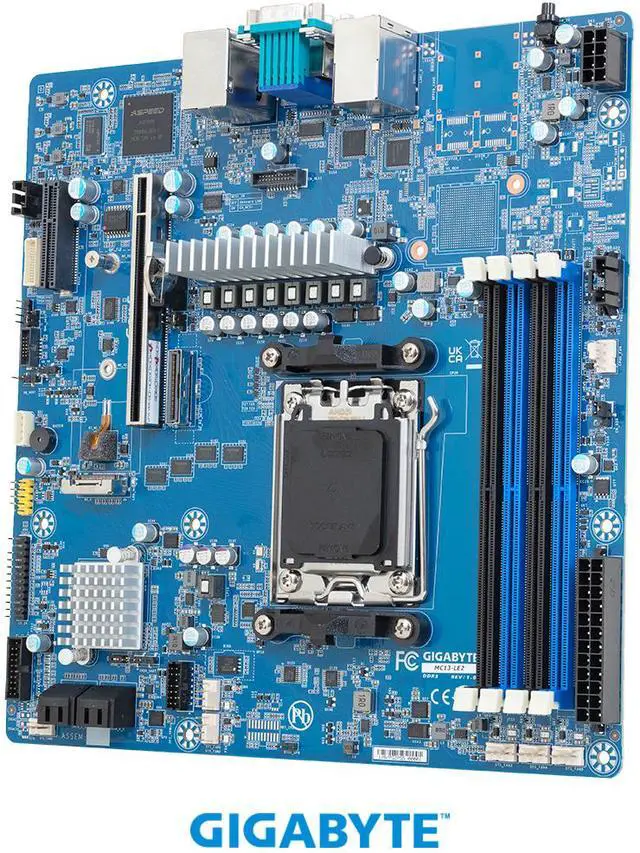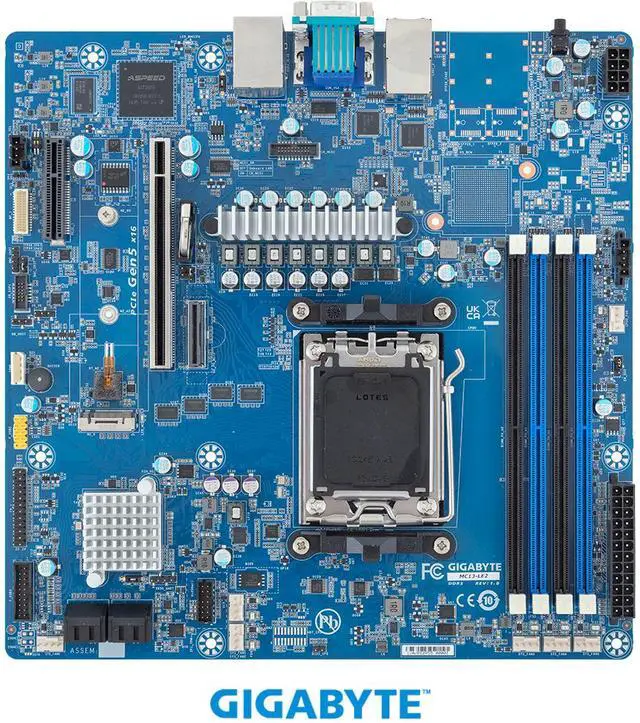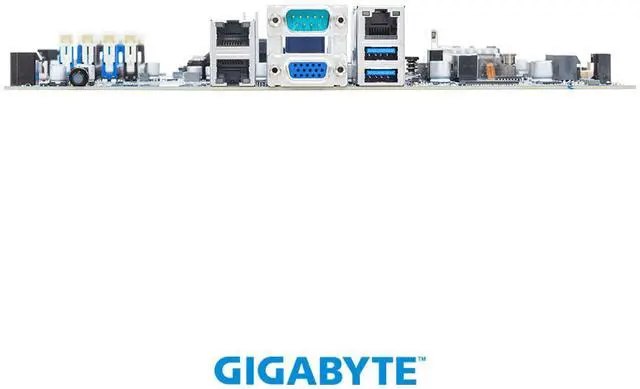


MC13-LE2
Motherboard - AMD EPYC™ 4005/4004 & Ryzen™ 9000/7000 - microATX UP 1Gb/s LAN
Architecture for Modern Data Centers
Supporting AMD EPYC™ 4005/4004 Series Processors for SMB and Hosted IT Services


AMD EPYC™ CPUs for 24x7 Business Growth and Manageability
AMD EPYC™ 4004 Series Processors were a welcome addition to the 4th Gen AMD EPYC™ processor family, and now the 4005 Series comes out of a new processor family with “Zen 5” core architecture - lowering the threshold for businesses and hosting services that have been wanting to move to a platform with a server OS and other enterprise features, yet at an optimal price point in GIGABYTE solutions. SMB and hosting services rely on server-grade reliability so they can continue running 24x7. At the same time, they need to have a higher degree of manageability than what is found at the consumer level. On top of validating, GIGABYTE provides GIGABYTE Management Console (GMC) for system management and GIGABYTE Server Management (GSM) software for monitoring multiple servers.
AMD EPYC 4005 Series Processor
AMD AM5 Socket is versatile as it can support the consumer platform yet is able to step into the field of enterprise-level applications, and GIGABYTE has motherboards and servers to support it. Taking advantage of its low cost per core and high core count options, the first processor on this platform, the AMD Ryzen™ 7000 Series, has proven its value in the enterprise server market. Now leaping to the AMD EPYC™ 4005 Series, AMD furthers expands capabilities by including even more enterprise features, such as support for Windows Server 2025. Using “Zen 5” architecture, processors can easily handle compute-heavy workloads yet are multiskilled for users to find an optimal choice for applications where performance, productivity, and efficiency matter.

4nm
process
up to
16
cores
up to
32
threads
B650E
chipset
PCIe 5.0
support
Up to
5600 MT/s
DDR5
Select GIGABYTE for the AMD EPYC™ 4005 Platform

Support for Server OS
GIGABYTE has validated AM5 platforms for compatibility with Windows Server 2025 and Ubuntu 24.04, for greater manageability and security.

Ease of Management
GIGABYTE servers come with GIGABYTE Management Console for IPMI management. And when using a server OS, greater management and control is possible.

Continuous Operation
GIGABYTE solutions have RAS features for continuous uptime and availability as users require and expect stable performance around the clock.

Energy Efficient
The use of high-efficiency VRMs & MOSFETs and low ESR capactitors & DCR choke achieve higher levels of efficiency in servers and motherboards.

Low-cost
With a cost down approach to design, unnecessary features are omitted, ensuring enterprise features in a very favorable, entry-level price point.

Ideal Form Factor
From micro ATX motherboard to short depth edge server to traditional rack server, every deployment scenario is covered in the GIGABYTE AM5 platform.
MC13-LE2 Product Overview

MC13-LE2 Block Diagram


Memory Support
- 4 unbuffered DIMMs memory socket with 2-Channel
- ECC/Non-ECC; DDR5 support
- Up to 5200MHz for 1DPC; up to 3600MHz for 2DPC
PCIe 5.0 Ready Design
MC13 equip several new components to ensure the best PCIe 5.0 signal quality, including PCB, PCIe Slots, M.2 Connectors, Re-drivers, Switches that are specifically designed for PCIe 5.0.
There will be no compromised on PCIe 5.0 performance on PCIe and M.2 interface.


Hardware Security
Optional TPM 2.0 Module
For hardware-based authentication, the passwords, encryption keys, and digital certificates are stored in a TPM module to prevent unwanted users from gaining access to your data. GIGABYTE TPM modules come in either a Serial Peripheral Interface or Low Pin Count bus.
Value-added Management
GIGABYTE offers free-of-charge management applications via a specialized small processor built on the server.
GIGABYTE Management Console
For management and maintenance of a server or a small cluster, users can use the GIGABYTE Management Console, which is pre-installed on each server. Once the servers are running, IT staff can perform real-time health monitoring and management on each server through the browser-based graphical user interface. In addition, the GIGABYTE Management Console also provides:
- Support for standard IPMI specifications that allows users to integrate services into a single platform through an open interface
- Automatic event recording, which can record system behavior 30 seconds before an event occurs, making it easier to determine subsequent actions
- Integrate SAS/SATA/NVMe devices and RAID controller firmware into GIGABYTE Management Console to monitor and control Broadcom® MegaRAID adapters.
GIGABYTE Server Management (GSM)
GSM is a software suite that can manage clusters of servers simultaneously over the internet. GSM can be run on all GIGABYTE servers and has support for Windows and Linux. GSM can be downloaded from GIGABYTE website and complies with IPMI and Redfish standards. GSM includes a complete range of system management functions that includes the following utilities:
- GSM Server: A software program that provides real-time, remote control using a graphical user interface through an administrator’s computer or through a server in the cluster. The software allows ease of maintenance for large clusters of servers.
- GSM CLI: A command-line interface for monitoring and managing remotely.
- GSM Agent: A software program installed on each GIGABYTE server node that retrieves information from each system and devices through the OS, and this software integrates with GSM Server or GSM CLI.
- GSM Mobile: A mobile app for both Android and iOS that provides admins with real-time system information.
- GSM Plugin: An application program interface that allows users to use VMware vCenter for real-time monitoring and management of server clusters.


[#1] All materials provided herein are for reference only. GIGABYTE reserves the right to modify or revise the content at any time without prior notice.
[#2] Advertised performance is based on maximum theoretical interface values as specified by the respective chipset vendors or standards organizations. Actual performance may vary depending on system configuration.
[#3] All trademarks and logos are the property of their respective owners.







